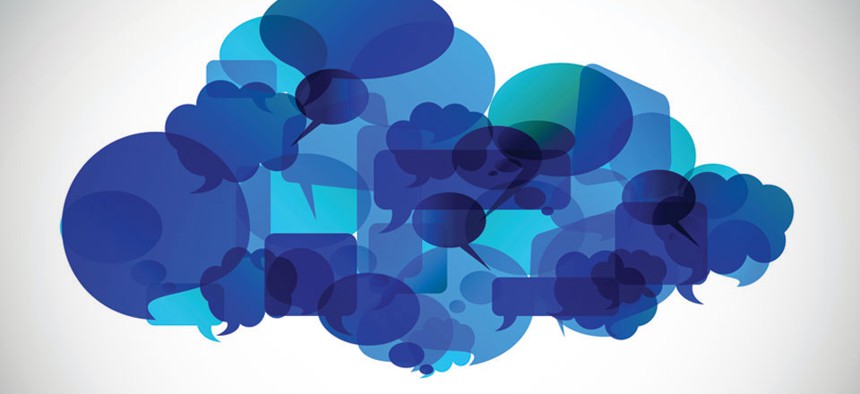Why ‘Cloud is Here to Stay’

Petr Vaclavek/Shutterstock.com
Cloud computing may be the most-hyped technology since the Internet itself, but its reputation as a disruptor is perhaps one of the few technologies that would have Public Enemy changing their lyrics.
In most cases, Public Enemy’s “Don’t Believe the Hype” is an appropriate response to buzzwords and jargon generated to describe the latest innovations in technology.
You’ve heard it all before over the years: You aren’t connected without a pager. Virtualization will save your organization. Big data will fix your agency’s data problem. The vast majority of technological innovations have been more hype than results: Big on promise and small on delivery.
That is, unless you buy a whole lot more stuff on top of it.
Cloud computing may be the most-hyped technology since the Internet itself, but its reputation as a disruptor is perhaps one of the few technologies that would have Public Enemy changing their lyrics.
It’s not that cloud is immune from being misrepresented or incorrectly touted. Greg Godbout, the departing executive director at 18F, recently told an audience there is a lot of “fake cloud” being marketed to government.
Yet, true cloud computing has more bite than bark. The Obama administration estimates federal agencies will spend $7.3 billion on provisioned services like cloud in the next year, and all estimates point toward those figures being dwarfed in future years.
“Cloud is not a trend; it’s here to stay,” said Kathy Conrad, deputy associate administrator at Office of Citizen Services and Innovative Technologies.
Conrad delivered a particularly interesting keynote speech at a March 12 event in Washington, D.C. Instead of the usual buzzword-laden soliloquy common around the Beltway, Conrad used a fictional character, “Laura,” to highlight the enormous impact cloud computing has on today’s citizens.
A recent retiree, Laura wakes up to an iPhone alarm clock, streams her music through an app in the cloud and uses cloud-based services to check the weather. She unknowingly uses cloud-based services to browse for real estate and takes 3-D tours of homes in Europe from the comfort of her home, which is decorated by objects she purchased through a vendor’s online store.
And while Conrad didn’t take the conversation there, even social things -- dating, for example -- hinge upon cloud. Tinder, for example, is a dating app that runs entirely in the public cloud.
If that’s not proof enough, Conrad dropped some numbers to back up her cloud claims.
The number of cloud servers will grow tenfold worldwide by 2020, she said, a year in which the world will see some 26 billion connected devices, which will produce and transmit data through any network of clouds.
Perhaps the zaniest statistic was that 4 billion humans now own mobile devices, while only 3.5 billion own a toothbrush. I don’t know what that says about people, but it says the cloud isn’t going anywhere anytime soon.
(Image via Petr Vaclavek/ Shutterstock.com)
NEXT STORY: DISA Drops $1.6B Contract after Controversy






